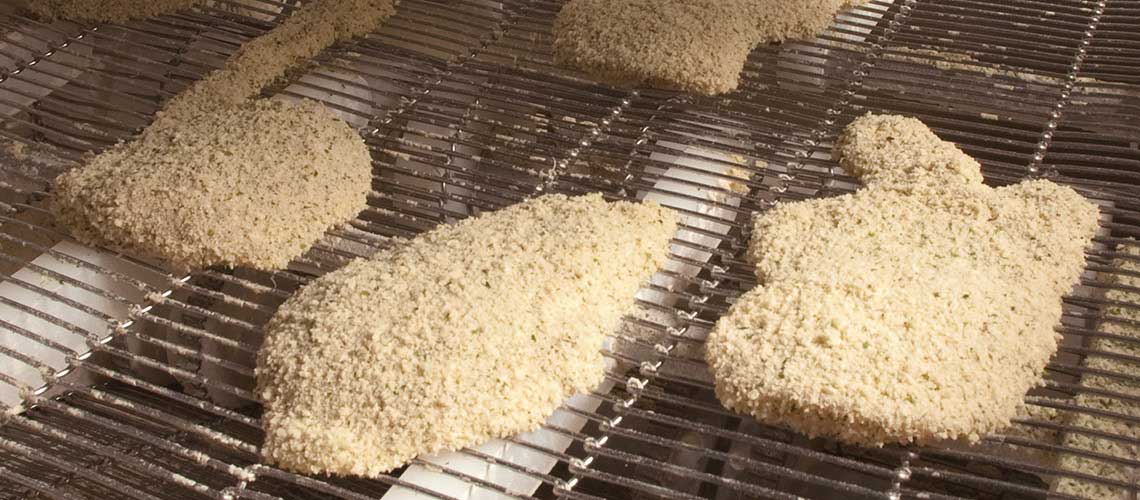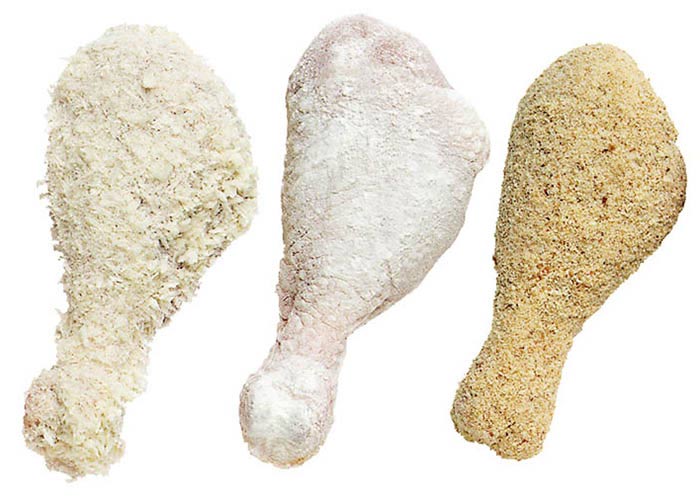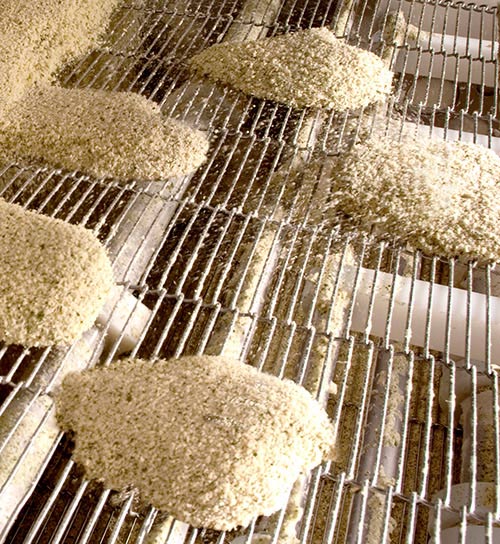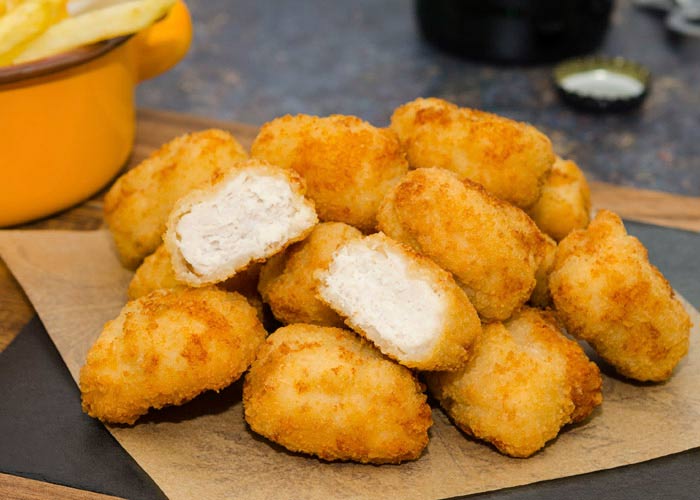Q&A with process prepared foods expert Doug Kozenski on industrial breading application of poultry products and associated equipment.

Poultry is the world’s primary source of animal protein and has increased fivefold (FAO)since the 1960s. As global fast-food chains continue to benefit from consumers seeking convenience, poultry products in the take-out market are expected to expand. Breaded chicken is a very popular poultry product; the global takeout fried chicken market is forecasted to increase significantly in the next five years, with North America likely accounting for a third of the market share. So as brands plan for continued growth of this category, Doug Kozenski, Heat and Control Processing Industry Manager, shares some insight into industrial breading application of poultry products and associated equipment required to achieve the best coating possible for a tasty piece of breaded chicken.
 Breading of poultry products can range from a very light to a very heavy flour or crumb coating. Flour coatings offer a softer coating and bite whereas crumb coatings provide the crispy texture many processors want. Also, light coatings are preferred for product when most of the flavor and the texture come from the meat itself, whereas heavier coatings are chosen when most of the flavor and the texture come from the coating.
Breading of poultry products can range from a very light to a very heavy flour or crumb coating. Flour coatings offer a softer coating and bite whereas crumb coatings provide the crispy texture many processors want. Also, light coatings are preferred for product when most of the flavor and the texture come from the meat itself, whereas heavier coatings are chosen when most of the flavor and the texture come from the coating.
Most poultry coatings, at minimum, consist of pre-dust, batter, and final breading. Heavier final coatings require multiple passes of coating to allow the coating to be “built up” on the meat, and it is common to have a pre-dust, batter, breading, another batter, and then a final breading. This can extend to a three-pass system when even heavier coatings are required. It is important to build up the coating to allow the batter(s) and the breading(s) to have time to properly hydrate and to “attach” itself to the product. If a heavy coating is added too quickly (e.g., single step), the coating will not properly adhere and will fall off during frying, handling, or freezing, resulting in uncoated product.
Homestyle coating is typically a final appearance where the surface of the product has a rough appearance as though it was handmade/homemade. The rough appearance differentiates the homestyle product from a “machine processed” smoother appearance. Homestyle coating is typically a flour-based coating as compared to a crunchy crumb. The homestyle appearance is frequently accomplished by flipping or rolling the previously coated substrate, most commonly completed in a drum breader for the final application of flour breading. The breading material in the drum breader is seeded (a small amount of moisture is added, either batter mix or water) to allow the breading to clump slightly. The seeded breading then adheres to the surface of the product, creating the rough homestyle look. The amount of moisture added and the speed at which the product passes through the drum breader will vary the intensity of the homestyle look, giving the producer the ability to fine-tune the appearance of the product.
 Batter and breading technology really have not changed much over the years. It has always been necessary to apply layers of coating to get the proper adhesion and for them to build up to achieve the desired end product. What has changed over the years is the equipment itself. As with all food processing equipment, sanitary design is now a primary focus when designing and manufacturing batter and breading equipment. Heat and Control follows AMI design principles and has incorporated many features to aid in cleanability of our coating equipment. In addition to sanitary design, Heat and Control has focused on functionality, reliability, and durability of the equipment. The durability of the belt itself has been a constant issue with all belted breaders. Due to the tension under which breader belting operates, belts commonly and frequently fail. Heat and Control developed a simple yet highly effective means of dynamic tensioning for the main belt which maintains proper tension and provides a means of shock absorption, greatly increasing the belt life on our breaders.
Batter and breading technology really have not changed much over the years. It has always been necessary to apply layers of coating to get the proper adhesion and for them to build up to achieve the desired end product. What has changed over the years is the equipment itself. As with all food processing equipment, sanitary design is now a primary focus when designing and manufacturing batter and breading equipment. Heat and Control follows AMI design principles and has incorporated many features to aid in cleanability of our coating equipment. In addition to sanitary design, Heat and Control has focused on functionality, reliability, and durability of the equipment. The durability of the belt itself has been a constant issue with all belted breaders. Due to the tension under which breader belting operates, belts commonly and frequently fail. Heat and Control developed a simple yet highly effective means of dynamic tensioning for the main belt which maintains proper tension and provides a means of shock absorption, greatly increasing the belt life on our breaders.
Historically, coating equipment has used hydraulic drives for all moving components; however, now customers regularly request electric drives. A key reason for this is that it is much more practical to design and to build coating equipment with electric drives due to the current electric drive technology and sizes. This allows for integration of the coating equipment into a PLC-controlled system for automatic speed setting/adjustment and for performance feedback.
 When we are approached by a customer to produce a coated product, we spend the time up front to fully understand the characteristics of the ingredients and the desired end product. It is important to understand if the meat is boneless or bone-in, if it is formed or whole muscle, and how it will be loaded on the line. The type and amount of coating is then discussed. It is important to know the amount of coating that is to be added to the meat, the texture the product is to have, as well as any other specific characteristics. When all this information is understood, it is then possible to design the optimal system to accomplish the desired end product. It may be that a single-pass line is sufficient, but for a heavier coated product, a double or even triple pass line may be necessary.
When we are approached by a customer to produce a coated product, we spend the time up front to fully understand the characteristics of the ingredients and the desired end product. It is important to understand if the meat is boneless or bone-in, if it is formed or whole muscle, and how it will be loaded on the line. The type and amount of coating is then discussed. It is important to know the amount of coating that is to be added to the meat, the texture the product is to have, as well as any other specific characteristics. When all this information is understood, it is then possible to design the optimal system to accomplish the desired end product. It may be that a single-pass line is sufficient, but for a heavier coated product, a double or even triple pass line may be necessary.
The type of product will also determine the appropriate equipment to use. For example, formed product will require using linear coating equipment to prevent damage to the product. However, whole muscle product (boneless or bone-in) may be able to use or may require drum breaders for the pre-dust and final breading applications. Understanding all the attributes and characteristics of the raw and finished product will allow for the design of the most suitable and compatible coating system to ensure full and stable coating of the product.
References
Food and Agriculture Organization of the United Nations (FAO)
Processing Industry Manager